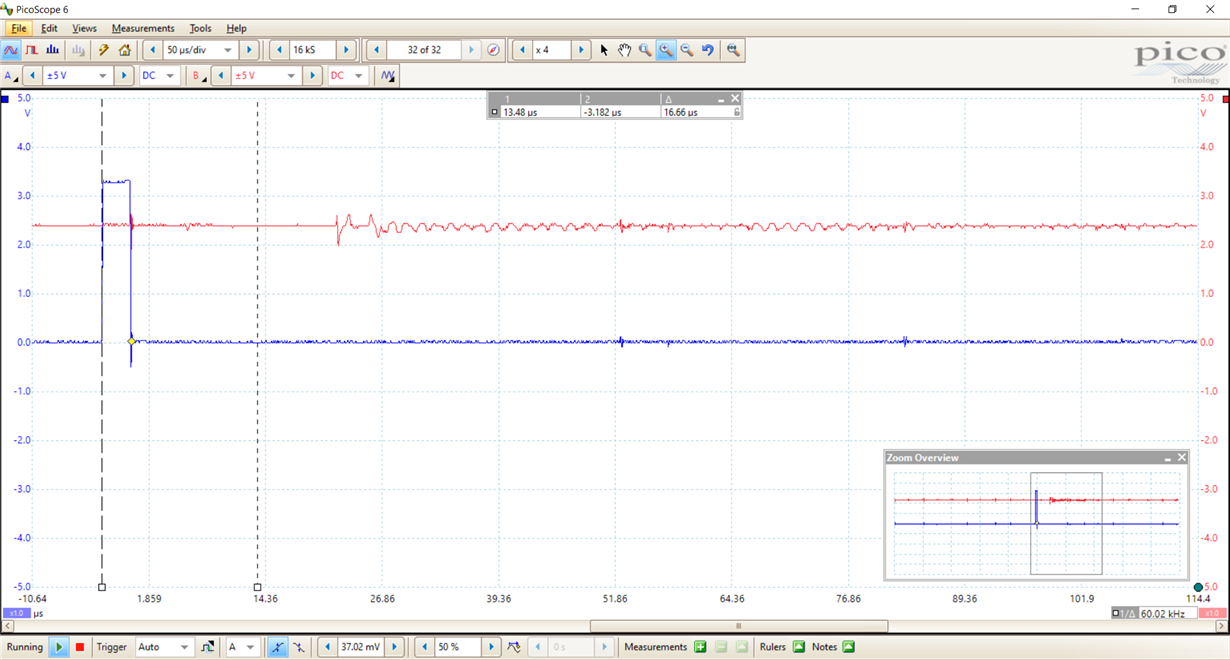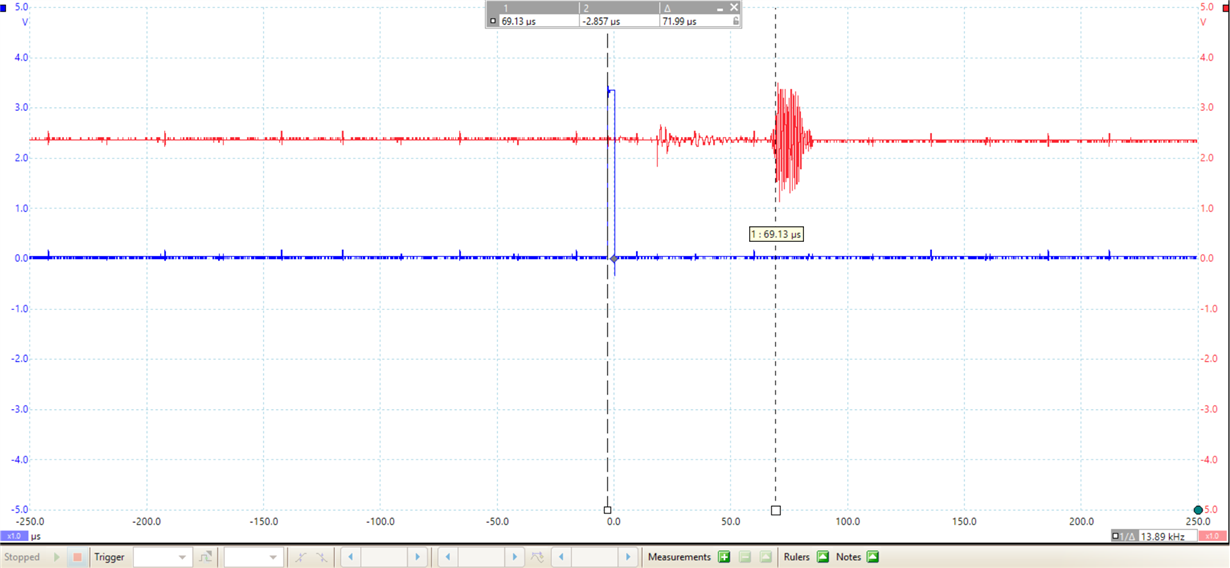Hi,
I purchased the TDC1000-C2000EVM to test TOF measurements from a 3mm diameter, 1 MHz transducer (insulated with silicone) to the wall of a container (5cm wide, 6cm deep) through water.
The setup for this is different to the one in the TDC application notes as the transducer is NOT glued to the surface of the container but instead, it is placed in the middle of the container.
However, when the transducer is in air, there was a reading of ~42us on the graph when it was expected to be 0? The oscilloscope shows the same:
However, when placed in container of water, there was no signal and the graph stops updating values until the transducer was removed from the water. The oscilloscope reflected the same:
I was expecting a ~33us signal across the 5cm container but the only signal I saw was the ringing(?) at ~20us. What could be the cause of this issue?
If possible, I would like to avoid using the 1 MHz StemInc transducer as my application would need to use this particular transducer.







